What is Hydroponics?
Hydroponics is a method of growing plants without soil, using mineral nutrient solutions dissolved in water. Plants use light to turn water and carbon dioxide into the food they need, through a process called photosynthesis. As long as the plants have enough access to water, air, and nutrients, dirt is not necessary for plants to grow.

Image: Wikimedia Commons
The word hydroponics comes from two Greek words, “hydro” meaning water and “ponics” meaning labor. The concept of soil-less gardening or hydroponics has been around for thousands of years — the Hanging Gardens of Babylon and The Floating Gardens of China are two of the earliest examples of hydroponics. Modern hydroponic systems are based on the same principles as their early predecessors and have been developed extensively in recent years to improve both yield and efficiency, leading many to believe that hydroponics will play an integral role in feeding future generations.
Types of Hydroponic Systems
Hydroponic systems can take many forms, each with advantages and disadvantages, but all with the common goal of delivering water to plant roots. Some systems are geared towards specific types of plants, while others are designed with low cost, large crops, or easy maintenance in mind. These are a few examples of a variety of commonly used hydroponic system designs.
Continuous Flow/NFT
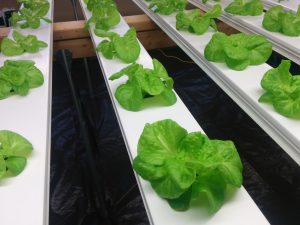
Image: Protofusion
Nutrient Film Technique (NFT) recirculates a shallow stream of water containing nutrients past the bare roots of plants in a channel, covering the roots with a thin film of nutrient water. This keeps the roots moist, while still exposed to air, which provides access to plenty of oxygen.
Deep Water Culture
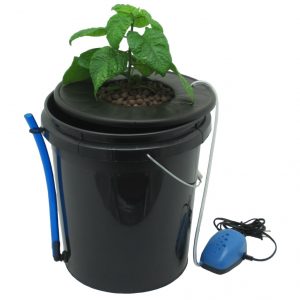
Image: Atlas Hydroponics
Deep Water Culture suspends the plant roots in a solution of nutrient-rich, oxygenated water. As the roots grow, the water level can be lowered, exposing some of the roots to air, which increases access to oxygen.
Aeroponics
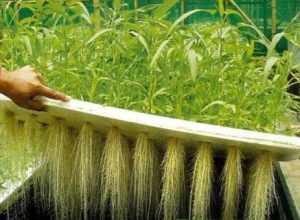
Image: Farming 4 Change
Aeroponics uses a fine mist of nutrient water to deliver nutrients to the plant roots. Suspending the roots in a mist-filled enclosure gives them simultaneous access to both nutrients and oxygen from the air. To optimize nutrient delivery without blocking oxygen access, the water micro-droplets must be smaller than 50 microns.
Ebb and Flow
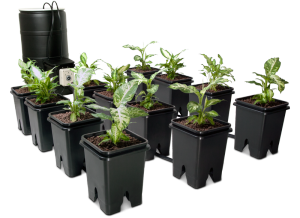
Image: Active Aqua
Ebb and Flow (or Flood and Drain) systems flood the roots of plants in a growing medium with nutrient water for a short period of time (5-10 minutes) before draining back into a reservoir. This gives the roots the water and nutrients they need, while exposing them to air for the rest of the cycle.
Rotary
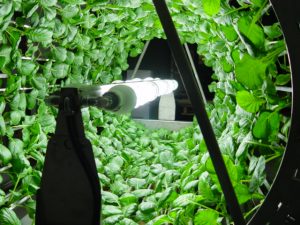
Image: Omega Garden
Rotary systems use a continually rotating circular frame with plants lining the inside and a light source at the center. Rotations take place as often as once an hour, and the plants receive nutrients once per cycle. Due to their constant struggle against gravity, plants typically mature quicker than more traditional methods.
Aquaponics
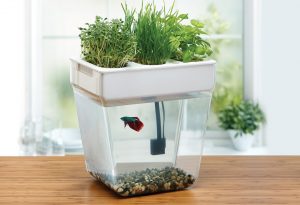
Image: Back to the Roots
Aquaponics is a symbiotic growing technique that combines plants and fish in the same system. Ammonia and other by-products released by the fish are broken down by bacteria into nitrates and nitrites, which are then used by the plants as nutrients.
![[protofusion]](http://protofusion.org/wordpress/wp-content/uploads/2013/02/protofusion-text2.png)
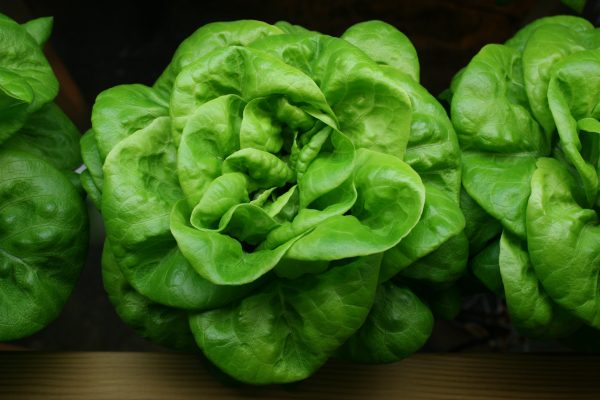
Leave a Reply